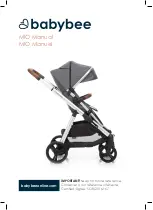
GEM80-400
3. I/O Highway
Issue 3 04/99
ALSPA GEM80-400 SERIES CONTROLLER TECHNICAL MANUAL
Page 3-13
The module address corresponds to the first address of the address block. When
the size of the address block is set by the Range Switch, care must be taken to
ensure that the automatically assigned addresses in the block do not overlap
any other previously allocated addresses as this will cause highway errors.
It must be remembered that the base address of the module must be at least
the number of addresses in the block less than the maximum number of I/O
addresses available in the host controller. If this rule is not observed it will result in
the loss of one or more of the top addresses in the block. For example, if the
maximum I/O address of the host controller is 512 I/O words and the module is
given a base address of 491, only 22 addresses are available. If the range
switches are then set to @1D (block size of 30), the top 8 addresses will be
unavailable or lost.
3.9.
Fault Indication
Each word of I/O has a corresponding pair of bits in an F-table location to
indicate incorrect operation of that address. The least significant bit of each
pair is the fault bit and the most significant bit is the fail bit. Under normal
operation, all the F-table locations monitoring I/O operation are at zero.
If any of the strobe or data lines for a particular ribbon are not working correctly,
the fail bit and the fault bit are set in all the F-table locations for that ribbon to
indicate that all data is being transferred incorrectly.
Failure of the expander module or a highway fault results in all bits in the
appropriate F-table (F200 to F329) locations being set to 1.
If the controller or expander module finds a fault with the Basic I/O ribbons, a
pattern of bits is written into the appropriate F-table locations.
If any address lines become shorted together or to a supply, only the fault bits in
the F-table locations for those addresses are set to 1.
Figure 3.4 shows the fault bit/address relationship for Basic I/O Ribbon which has
an address range of zero to fifteen.
If the controller had any strobe or data lines shorted on the Basic I/O, the bit
pattern 1111 1111 1111 1111 (all the fail bits) would be set in tables F200 and F201.
If the address line A6 is shorted to 0V, the fault bits will be set for addresses 12
and 13 in fault table F201. The bit pattern will be 0000 0101 0000 0000.
The F-table associated with its block of 8 I/O addresses can be calculated by
using the formula:
Fn = (n/8) + 200
where n is the I/O address used. E.g. to find the F-table associated with A/B 49
Fn = (49/8) + 200 = 6 + 200 = F206
















































